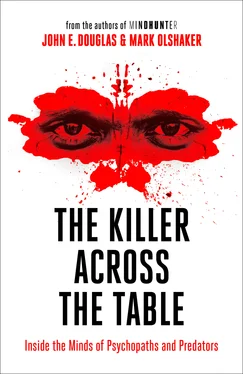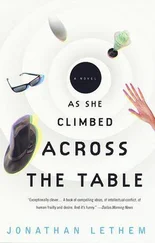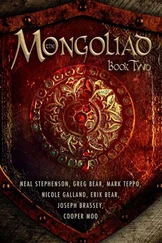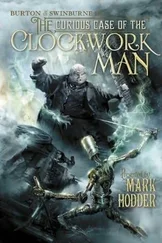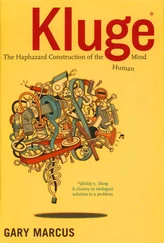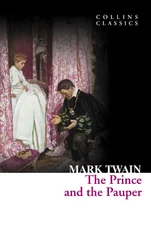My goal was to turn on the “DVD” in McGowan’s brain that had recorded the homicide. After a quarter of a century behind bars, McGowan recalled every specific detail of that Thursday afternoon. It was like having a friend talk about a terrific movie he’s seen. But in this case, McGowan was the scriptwriter, the producer, the director, and the lead actor. He got to exercise the three aspirations of nearly every predator: manipulation, domination, and control.
Without looking directly at me, he described luring Joan into the lower level and his bedroom, ordering her to remove her clothes, and sexually assaulting her.
I asked him if he had penetrated her. Just with his finger, he insisted.
Then how did semen get into her vagina? It was on his fingers after he ejaculated, he said.
In a focused and excited state with no indication of any remorse, he described how he picked her up by her ankles, swung her around, and slammed her head to the floor, fracturing her skull. The account he gave was not much different from what he had told detectives and psychiatrists previously. He never even attempted to fake empathy, as other offenders had when I’d interviewed them. What struck me was not the facts, but the obvious intentionality.
It was hot as hell outside, but the interview room was very cold. In fact, I was trying to keep myself from shivering as I sat there, even though I was wearing a wool suit. McGowan, on the other hand, had begun perspiring profusely, just as he had described feeling after the attack. He was looking away from me in a trancelike state, breathing heavily, and his prison shirt was drenched with sweat. I could see his chest muscles trembling.
I thought immediately of the quotation I had just read from Dr. Galen’s initial report, after McGowan had beaten and strangled Joan: “she stopped struggling … just sort of lay there. I got dressed. I had been sweating so violently.” In his head and in his physical being, he was right back in the act.
“It’s pretty hard to strangle someone, isn’t it?” I asked. “Even a very young person.”
“Yeah,” he readily agreed. “I didn’t realize it would take so much strength.”
“So what did you do?”
“Well, I turned around and positioned myself behind her.” I took that to mean he came around to where her head lay on the floor.
“And how long did you choke her?”
“Until I thought she was dead.”
“Then what?”
“I went out to get some bags to stuff her in and put her clothes in, and when I got back, she was twitching.”
Now, this was not a blitz-style attack resulting from a momentary surge of uncontrollable rage. He did not suddenly come to his senses and say to himself, Oh, my god! What have I done? When he saw that she was still twitching, his only thought was to choke her again to make sure she was finally dead. It was almost as if he had murdered her again.
The one time I remember McGowan looking right at me during this entire description was when he said, “John, when I heard the knock and looked up through the screen door and saw who was there, I knew I was going to kill her.
“I can feel two different kinds of rage,” he went on. “Red rage bothers me, but I can turn my head, focus, and control it, like when someone cuts me off in traffic or I have a conflict at school. But white rage I can’t control.”
“And is that what you were feeling when Joan came to your house?”
“Yeah,” he said. “That’s right.” Our eyes were still locked.
So he killed Joan while seized with white rage. The fact that he even had a name for it told me he had experienced it before and most likely would again. But he didn’t kill her right there at the front door no matter what was raging within him. At that moment, a methodical plan had formed instantly in his mind as to how he was going to get her where he wanted in order to be able to do what he wanted to do.
I pointed this out and said to him, “You’re not a psychotic, even though you tried to show dissociation from the crime. What I see is pretty logical, rational behavior.” He didn’t argue with me.
As for the psychiatric assertion that “The killing was the consequence of an additional upset and failure due to premature ejaculation”: wrong again. The killing was the result of a combination of displaced rage, sexual excitement at his momentary power over another human being, and the very practical consideration of leaving no witness to what already was an unspeakable crime.
He had admitted as much in his interview with Dr. Galen when he said, “If I let her go, my whole life was gone. All I could think of was just to get rid of her.” I wondered if anyone before me had ever taken the time to correlate all of McGowan’s statements together.
But I didn’t minimize the killing as merely a practical consideration to avoid being identified and caught. This was not a question of simply going too far. The way McGowan described it, I could tell that the gratification and emotional fulfillment of the act went through to the brutal murder itself and his ability to destroy something or someone.
At one point I asked him, “If I could have captured one ‘video image’ of your face while you were doing this, what would it show me?”
Obligingly, his face contorted into what I would characterize as an intense, malevolently satisfied grimace.
Even the way he described the body disposal was logical and methodical, as opposed to panicked or hurried. He got some towels and cleaning materials to wipe up the blood, trying to get this potential forensic evidence out of there so that his mother wouldn’t see it and in case the police searched the premises. He wrapped the body in a carpet and drove some distance to a setting he was familiar with to dump it. Then he went back home and acted as if nothing had happened. Joining the neighborhood search for Joan was a conscious means of covering his tracks.
Most cons, knowing they potentially have something to gain from the interviewer’s good report, will try to BS to one extent or another. There was none of that with McGowan. I think that was because I was well prepared, and he was intelligent enough to understand that it wouldn’t work. His goal in agreeing to talk to me was to improve his chances of parole, and he knew that my catching him up in a lie was not going to cut it. And the whole point of my approach was to make the subject “comfortable” enough to let me know what he was actually thinking and feeling.
What did surprise me was that he didn’t even try to express any sorrow for what he had done or feeling for Joan’s family. He was certainly sorry that the whole thing had happened—I was not the first one to hear that sentiment—but there was no sense of emotional comprehension of what he had taken away from this little girl, all those who loved her and all those who had come into her brief life. The impression I received was that he was telling me that since he couldn’t bring this young girl back to life, he just had to move on, and everyone should understand that. The murder was simply a fact of life to him, as if he had had cancer or a heart attack, and now the doctors were determining if he was well enough to leave the hospital and resume normal life.
Every violent crime is a scene acted out between two or more participants. And when the offender and the victim are up close and personal—as opposed to, say, a bombing, a poisoning, arson, or a sniper attack—a trained crime analyst can gain a tremendous amount of information on what is actually going on in the mind of the criminal by observing his behavior, even if he says little or nothing. As I listened to each detail of the deadly encounter between Joseph McGowan and Joan D’Alessandro, I focused not only on the fact of the violence and sexual assault but on the way it was done.
Читать дальше
